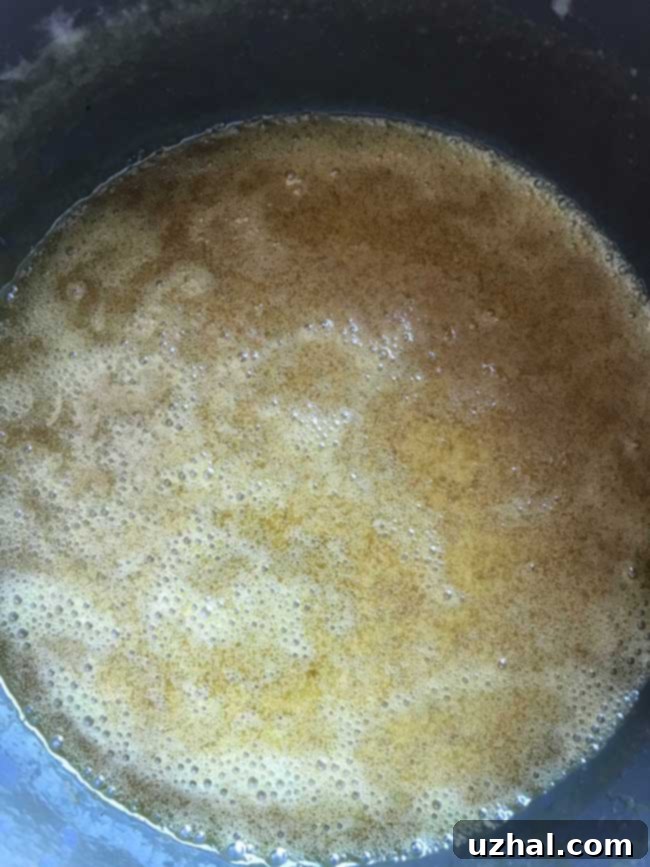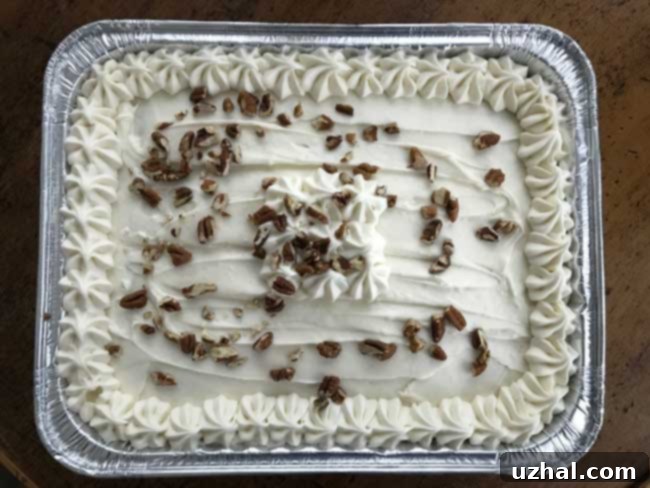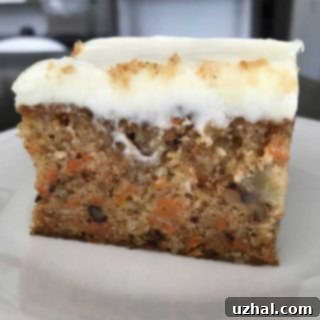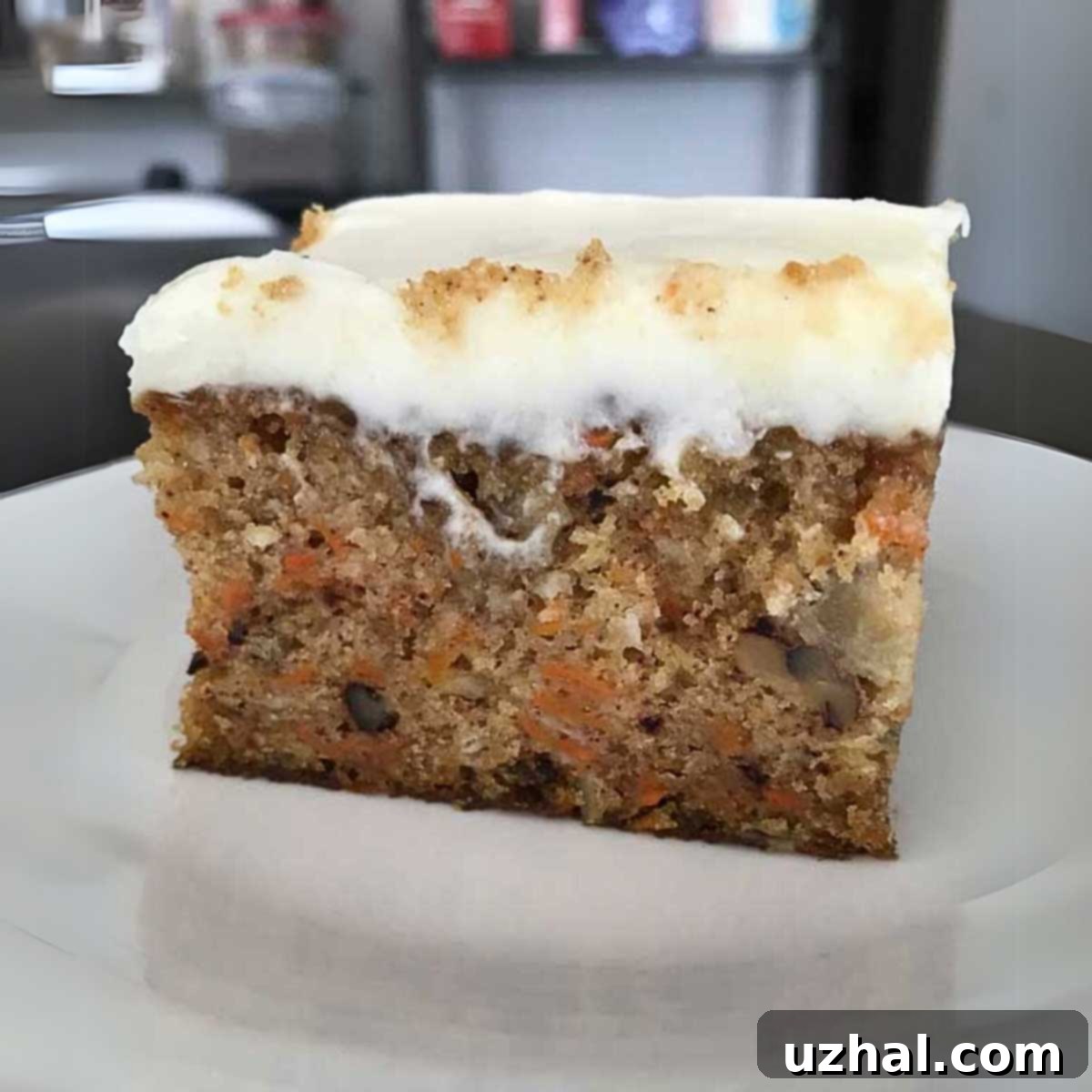Ultimate Southern Living Buttermilk Glazed Carrot Cake: A Moist 9×13 Delight with Cream Cheese Frosting
As a passionate home baker, I confess I might be among the last to finally try the legendary buttermilk glazed carrot cake recipe, originally a beloved gem from Southern Living. However, now that I’ve experienced its magic, I can wholeheartedly attest to its unparalleled deliciousness. Despite my initial reservations about a carrot cake featuring both a luscious glaze *and* a generous layer of cream cheese frosting, this recipe has won me over completely. It delivers on its promise of an exceptionally moist crumb and a symphony of flavors that will undoubtedly have me baking it again and again.
While often presented as an impressive layer cake, I discovered remarkable success (and a lot less fuss) by baking this masterpiece in a convenient 9×13 inch pan. This adaptation makes it an ideal choice for potlucks, family gatherings, or simply when you crave a substantial, crowd-pleasing dessert without the complexities of stacking layers. Its robust flavor profile, coupled with the ease of preparation in a single pan, truly makes this a must-try for any carrot cake enthusiast.
Jump to Recipe

What Makes This Carrot Cake Extraordinary?
This isn’t just any carrot cake; it’s a culinary experience. What sets this particular Southern Living recipe apart is its ingenious two-pronged approach to moisture and flavor: a warm buttermilk glaze poured over the freshly baked cake, followed by a light and tangy cream cheese frosting. The cake batter itself follows many classic carrot cake parameters – utilizing familiar ingredients like flour, sugar, eggs, and a modest amount of oil. However, the addition of a special buttermilk glaze transforms it from a delicious cake into an unbelievably moist and tender dessert. This extra step, while simple, is the secret weapon, allowing the glaze to seep deeply into the warm cake as it cools, ensuring every bite is infused with buttery, tangy sweetness. My initial concern was that the cake might become mushy, but I can happily report that it achieves a delightful, moist (but never wet!) texture that truly melts in your mouth.
The Magic of the Buttermilk Glaze
The buttermilk glaze is truly the star of this recipe, providing a unique moisture and flavor boost that takes this carrot cake to the next level. Crafting this golden elixir involves boiling a precise blend of sugar, baking soda, buttermilk, corn syrup, and butter until it achieves a rich, golden-brown hue. As this warm, aromatic glaze is generously poured over the hot cake, it slowly soaks in, permeating every crumb. This process not only locks in an incredible amount of moisture but also infuses the cake with the distinct, subtly tangy notes of buttermilk and the rich depth of butter, creating a complex flavor profile that’s utterly irresistible.

The Role of Baking Soda in the Glaze
An interesting and crucial component in the glaze is the baking soda. When combined with the acidic buttermilk and heated, it causes the glaze to become soft and foamy during the boiling process. Beyond its textural contribution, baking soda also plays a part in achieving that desirable golden-brown color, indicating caramelization and a richer flavor. It’s essential to boil the mixture thoroughly until it reaches this golden stage. This vigorous boiling helps to ensure that any lingering baking soda flavor is cooked out, leaving behind only the pure, delicious essence of the glaze.
Fluffy and Fabulous: The Cream Cheese Frosting
No carrot cake is truly complete without a decadent cream cheese frosting, and this recipe delivers a truly exceptional one. If you, like me, appreciate a frosting that is wonderfully fluffy and light, with a balanced cream cheese flavor that isn’t overly “cheesy,” then this recipe is for you. The original recipe calls for a slightly unusual 11-ounce measurement of cream cheese. This seemingly odd quantity is a charming historical nod to a bygone era when cream cheese was commonly sold in 3-ounce packages, leading bakers to combine an 8-ounce block with a 3-ounce one to achieve the desired amount. Today, you can easily adapt by using one standard 8-ounce block plus half of another 3-ounce package, or simply adjust to 8 ounces for a slightly less tangy frosting, or a full 12 ounces for a bolder cream cheese presence. The key is to ensure both the butter and cream cheese are adequately softened to achieve that irresistibly smooth and airy consistency.
Pan Size and Versatility
One of the beauties of this recipe is its adaptability. While traditionally a layer cake, I’ve found it performs beautifully and with much less effort in a standard 9×13 inch baking pan. This size is perfect for creating a sheet cake that’s easy to transport, slice, and serve, making it an excellent choice for gatherings, potlucks, or casual desserts. The generous proportions ensure there’s enough to go around! For even more convenience, I’ve successfully baked it in slightly smaller disposable aluminum pans, which are perfect for gifting or when you need an effortless cleanup. If you’re baking for a smaller crowd or prefer a thicker cake, you can easily halve the recipe and bake it in an 8-inch square pan. Just remember to adjust baking times slightly and keep an eye on it to prevent over-baking. Regardless of the pan size, the resulting cake is consistently moist and delicious.

The Importance of a Day of Rest
Patience, as they say, is a virtue, especially when it comes to this buttermilk glazed carrot cake. It’s highly recommended to allow the cake to rest for about a full day before applying the cream cheese frosting. Many who have made the original recipe note that while the cake is good on day one, it truly becomes fabulous by day two. This resting period allows the buttermilk glaze to fully absorb and distribute its moisture throughout the cake, deepening the flavors and allowing them to meld beautifully. The texture also improves, becoming more stable and perfectly moist. Since I’ve only ever enjoyed this cake on day two (after eagerly anticipating it overnight!), I can confidently vouch for this advice. Cover the glazed cake loosely with plastic wrap and refrigerate it overnight to allow this magical transformation to occur.
Baking Tips for the Perfect Carrot Cake
Achieving the perfect carrot cake is all about careful preparation and attention to detail. For the best results, always start by preheating your oven to the specified temperature and properly greasing and flouring your baking pan to prevent sticking. When it comes to ingredients, ensure your carrots are finely grated for an even texture throughout the cake; a food processor can make quick work of this. Don’t forget to drain the crushed pineapple thoroughly to avoid adding excess moisture to the batter, which could make the cake dense. For the pecans, a quick toast in a dry skillet or oven before chopping will enhance their nutty flavor significantly, adding another layer of deliciousness to your cake.
Mixing the batter is straightforward: whisk dry ingredients together first, then beat eggs and sugar until light and fluffy before incorporating the oil and vanilla. Alternate adding the buttermilk and flour mixture, mixing just until combined to avoid overworking the gluten, which can lead to a tough cake. Gently fold in the carrots, pineapple, coconut, and toasted pecans. During baking, covering the cake loosely with foil after about 30 minutes is a clever trick to prevent the top from browning too quickly while the inside continues to cook through to perfection.
- Peanut Butter Bar Cookies
- Chocolate Carrot Brownies
- Sour Cream Carrot Cake
- The Best Chocolate Chip Bars!
- Carrot Walnut Muffins
Recipe: Southern Living Buttermilk Glazed Carrot Cake

9×13 Inch Carrot Cake with Buttermilk Glaze
Anna
Pin Recipe
Ingredients
- 2 cups all-purpose flour (270 grams)
- 2 teaspoons baking soda
- ½ teaspoon salt
- 2 teaspoons ground cinnamon
- 3 large eggs
- 2 cups sugar (390 grams)
- ¾ cup vegetable oil
- ¾ cup buttermilk (170 grams)
- 2 teaspoons vanilla extract
- 2 cups grated carrots (280 grams)
- 8 ounce can crushed pineapple, drained well
- 3 ½ ounces sweetened flaked coconut
- 1 cup chopped pecans, toast before chopping
Buttermilk Glaze
- 1 cup sugar (200 grams)
- 1 ½ teaspoons baking soda
- ½ cup buttermilk (114 grams)
- ½ cup butter, unsalted or salted (114 grams)
- ¼ teaspoon salt, can omit if using salted butter
- 1 tablespoon light corn syrup (20 grams)
- 1 teaspoon vanilla extract
Cream Cheese Frosting
- 1 ½ sticks butter, softened (use salted or add a pinch of salt) (170 grams)
- 11 ounces cream cheese, softened (308 grams)
- 1 pound powdered sugar (3 ¾ cups)
- 1 ½ teaspoons vanilla extract
Instructions
-
Preheat oven to 350 degrees F. and generously grease and flour a 9×13 inch baking pan.
-
In a medium bowl, whisk together the all-purpose flour, baking soda, salt, and ground cinnamon. Set this dry mixture aside.
-
In a large mixing bowl, using an electric mixer, beat the eggs and sugar together for approximately 2 minutes, or until the mixture becomes thick and light yellow in color. Gradually drizzle in the vegetable oil, then add the vanilla extract, mixing until just combined.
-
Alternately add the buttermilk and the reserved flour mixture to the egg mixture, beginning and ending with the flour mixture. Mix on low speed just until blended, being careful not to overmix.
-
Gently fold in the grated carrots, well-drained crushed pineapple, sweetened flaked coconut, and chopped toasted pecans until evenly distributed.
-
Pour the prepared batter into the greased 9×13 inch pan. Bake at 350 degrees F for a total of 42 minutes. After the first 30 minutes, loosely cover the cake with aluminum foil to prevent excessive browning of the top.
-
Remove the cake from the oven. While the cake is still hot, immediately prepare the buttermilk glaze.
Buttermilk Glaze
-
In a medium saucepan (a 3 ½ quart saucepan works well), combine the sugar, baking soda, buttermilk, butter, and light corn syrup. Bring this mixture to a boil over medium heat, stirring almost constantly to prevent scorching. Continue to boil, stirring, for 4 minutes, or until the mixture darkens to a rich golden brown color.
-
Remove the glaze from the heat and allow it to cool slightly for a minute or two. Stir in the vanilla extract. Immediately and evenly pour the warm glaze over the entire surface of the hot cake.
-
Allow the glazed cake to cool completely at room temperature for several hours. Once fully cooled, cover the cake tightly with plastic wrap and refrigerate overnight. This crucial step allows the glaze to fully penetrate and moisten the cake, enhancing its flavor and texture.
-
The next day, prepare the cream cheese frosting for assembly.
Cream Cheese Frosting
-
In a large mixing bowl, using an electric mixer, beat the softened cream cheese and softened butter at medium speed until the mixture is completely smooth and free of lumps. Gradually add the powdered sugar, beating at low speed until just incorporated, then increase speed to medium-high and beat until the frosting is light, fluffy, and smooth.
-
Stir in the vanilla extract. Spread the luscious cream cheese frosting evenly over the chilled, glazed carrot cake. If desired, use any remaining frosting to pipe a decorative border around the edges of the cake. Slice and serve!
